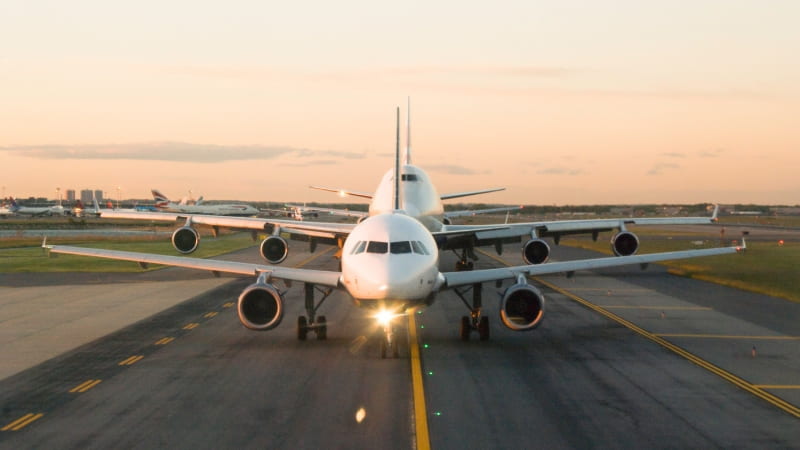CLIMATE CHANGE AND WEIGHT-RESTRICTED FLIGHTS
By: Ethan Coffel

If you are particularly unlucky, you may have at some point found yourself “bumped” from a flight – that is to say, you were kicked off and most likely left stranded. There are lots of reasons why this might happen, the most common being that the airline overbooked a flight and too many of the passengers with tickets showed up. But another possibility, especially in the summertime, is that the airplane was weight restricted due to high temperatures.
When air gets hotter, it also gets less dense. And when an airplane wing moves through less dense air, it produces less lift at a given speed. The result is that on hot days, airplanes have to generally go faster to takeoff.
But, going faster means that more runway is needed to accelerate to takeoff speed, so there’s a limit – a temperature at which for a given aircraft and airport, there isn’t enough runway available for the airplane to take off at its maximum weight.
In this situation, there is only one thing to do – make the airplane lighter. Since fuel is somewhat non-negotiable, the flight’s payload of passengers and cargo must be reduced, and the airplane is said to be weight restricted. Weight restriction is reasonably common in the summertime, although it occurs at some airports more often than at others. Specifically, airports with high temperatures (Phoenix), high elevations (Denver), or short runways (New York’s LaGuardia or Washington, DC’s Reagan National) are particularly susceptible to weight restriction.
My adviser Radley Horton and I recently finished a study looking at how the frequency of weight restriction could change in the future as a result of climate change. By mid-century, 2050-2070 or so, climate projections suggest that a rise in average surface temperature of 3-4 degrees Celsius is possible. These average changes would then also be accompanied by a dramatic increase in the frequency and severity of extreme heat events; our projections show that at many locations across the US, we may see as many as 20 days per year that exceed the average hottest day per year now.
This is a dramatic change in temperature, and we project that it will have a significant impact on the number of weight restriction days per year. Our results show that at the four airports we analyzed (the ones listed above), climate change may result in a doubling or tripling of the number of days requiring weight restriction by mid-century.
An increase in temperature means that on hot days, airplanes will be able to carry less weight – and these days will occur more often. A smaller payload means less paying passengers or cargo on an airplane, which translates into less revenue per flight. It is certainly conceivable that this phenomenon could have a noticeable negative economic impact on the airline industry.
More importantly, our study highlights one of the hidden impacts of climate change. There will be many such effects of rising temperatures and modified weather patterns, some of them hard to anticipate. Adaptation will usually be possible, but it will have a cost. We hope that by identifying some of these climate risks, industries will consider climate change in their medium- to long-range plans, and perhaps even support emissions reduction to avoid radically changing the environment that we all operate within.
